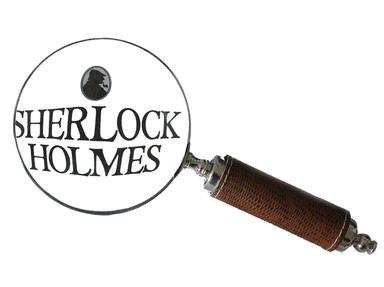Quiz Answer Key and Fun Facts
1. In "The Empty House" what disguise does Sherlock Holmes adopt when he follows Watson back to his study in Kensington?
2. Who was the only person in whom Holmes confided when the rest of the world believed that he had died at the Reichenbach Falls in the encounter with Moriarty?
3. In "The Empty House" who is the man with the "virile and sinister face" that Holmes and Watson overpower in the building opposite to their rooms in Baker Street?
4. In "The Norwood Builder" what had John Hector MacFarlane left in Mr. Jonas Oldacre's house that set the police on his trail.
5. In "The Norwood Builder" what did Holmes deduce from the erratic handwriting in the preparation document for the will that Jonas Oldacre wanted drawn up?
6. In "The Norwood Builder" what was the conclusive new evidence of MacFarlane's guilt that Lestrade claims to have found?
7. In "The Dancing Men" which is the first letter that Sherlock Holmes is able to work out when he tackles the code of the dancing men?
8. Having identified the first letter in the code of the "dancing men" which female name does Holmes use to help him find the other letters?
9. In "The Solitary Cyclist" Holmes sends Watson down to find out as much as he can about the inhabitants of Charlington Hall. When Watson returns with his scanty information where does Holmes say that he should have gone to find out more?
10. In "The Solitary Cyclist" how had the villains Carruthers and Woodley decided which one of them was to marry the girl who was to come into the big inheritance?
11. In "The Priory School" where was little Lord Saltire kept after he was enticed away from his school?
12. At the end of the case of "The Priory School" what does Holmes say is the most interesting object he has seen "in the North"?
13. In "Black Peter" what had Holmes been doing with the "huge barb-headed" spear that he brings back to Baker Street with him one morning?
14. With which particular crime is Charles Augustus Milverton most associated in the story that bears his name?
15. In "Charles Augustus Milverton" which person does Holmes suggest to Lestrade might fit the description of the "middle-sized, strongly built man - square jaw, thick neck, moustache...."?
16. In "The Six Napoleons" which famous jewel was found inside the last bust of the Emperor to be smashed?
17. In "The Three Students" what was the source of the black clay that Holmes found in the room where the examination paper had been copied?
18. In the case of "The Golden Pince-Nez" where does the woman responsible for the death of Mr. Willoughby-Smith conceal herself?
19. In what way does Pompey help Sherlock Holmes in the case of "The Missing Three-Quarter"?
20. In "The Missing Three-Quarter" what was the reason for the student's disappearance?
21. In "The Abbey Grange" the three Randalls are suspected of the robbery and the murder. How is their innocence finally established?
22. In "The Abbey Grange" what did Holmes deduce from the fact that all the beeswing was in one of the three glasses?
23. In "The Abbey Grange" where did Holmes tell Hopkins to look for the missing silver?
24. Where does Holmes put the letter that he recovers in "The Second Stain"?
25. In the case of "The Second Stain" what is the eminent position of the man who calls upon Holmes to ask him to try to recover a missing letter?
Source: Author
Philian
This quiz was reviewed by FunTrivia editor
MotherGoose before going online.
Any errors found in FunTrivia content are routinely corrected through our feedback system.

